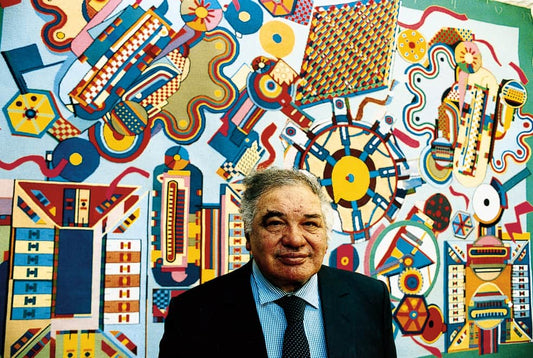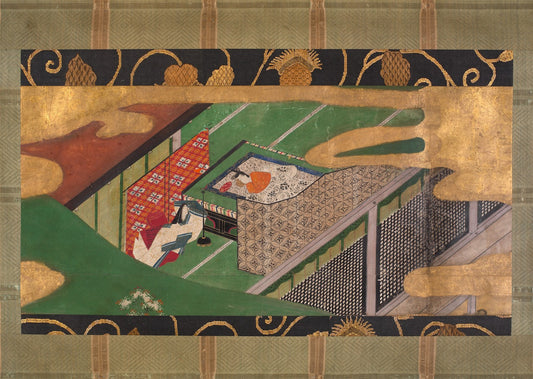Feature image: Great Art Explained thumbnail
5 Art Analysis YouTube Video Essays Worth Your Time
The Internet is a vast expanse of discovery where you can learn about practically any topic that interests you. On YouTube, a new format that seeks to educate and entertain viewers has exploded in popularity in the past few years: the video essay.
It’s no surprise that a wide array of intelligent and engaging art-related video essays are available, featuring everything from analyses of famous paintings to lengthy deep dives into entire artistic movements. It can be overwhelming for art lovers who are newcomers to video essays to figure out where to start and what to watch.
We’ve compiled this list of five unique video essays—all varying in length and subject matter—to help those looking to explore the sea of great content on YouTube.
“3 Reasons Why Public Art is so Mid” by Art Chad
In this 8-minute video essay, creator Art Chad presents his criticisms of public art and summarizes the three reasons why (according to him) modern public art is so lackluster. Borne out of economic necessity for local governments, created by art experts who can’t understand how the general public will interpret public art, and lacking in empathy and authenticity, public art pieces have recently failed to capture the cultural zeitgeist. Art Chad argues that “making art is an inherently selfish act.” For example, he brings up the infamous “Embrace” statue that commemorates Martin Luther King Jr. and his wife Coretta Scott King’s relationship unveiled in Boston in January 2023.

With a casual, comedic tone and a fast-paced editing style, Art Chad makes “videos about art, philosophy, and [Gen-Z] culture as an attempt to find common ground before the world ends.” With 10.1K subscribers, Art Chad is just one of the many smaller creators making high-quality content that deserves to be seen. You can also find Art Chad on Instagram, X, and Patreon.
“Leonardo da Vinci's Best Painting (Is Not The Mona Lisa)” by The Nerdwriter
Creator Evan Puschak, AKA “The Nerdwriter,” makes a bold claim in this 9-minute video essay: Leonardo da Vinci’s best painting is not the Mona Lisa (1503-1506), but instead is his 1503-1519 work The Virgin and Child with St. Anne. Although not nearly as well known as the Mona Lisa, The Virgin and Child with St. Anne is just one of da Vinci’s many works depicting religious figures. This painting features the Virgin Mary, her mother, Saint Anne, and the infant Jesus. The Nerdwriter analyzes the painting’s composition, form, and technique to make his argument. He notes how da Vinci’s extensive personal knowledge of math and science blended with his artistic talents to masterfully represent the spiritual.

The Nerdwriter “is a video series that puts ideas to work,” according to the channel’s About section. 3.15 million subscribers enjoy The Nerdwriter’s passionate, short-form video essays that analyze not only art but film, TV, screenwriting, and technology as well. Outside of YouTube, The Nerdwriter can be found on X, Facebook, and Patreon.
“The Myth of the Tortured Artist” by The Art Assignment
Content warning: this video essay from The Art Assignment discusses mental illness and suicide.
This video succinctly yet thoroughly delves into the myth of the controversial “tortured artist” trope in just over ten minutes. Many seem to believe that psychological suffering produces the most profound creative work—not just within artists but within authors, poets, songwriters, and just about any other creative profession. In the art world, the most well-known example of a “tortured” artist who amassed posthumous fame is Vincent van Gogh, referenced in the video. Citing several studies, The Art Assignment’s host, curator Sarah Urist Green, helps viewers understand that creativity and mental illness don’t necessarily have a causal relationship.

The Art Assignment explores “art and art history through the lens of things happening today.” Although uploads to the channel are infrequent, The Art Assignment produces high-quality, well-researched episodes on meaningful, thought-provoking art topics for 697K subscribers. The Art Assignment can be found across social media on X, Facebook, and Tumblr.
“Weird Titles” by Solar Sands
If you have a little more time on your hands, consider checking out this 22-minute-long video essay from creator Solar Sands, who explores the “weird” titles of several famous and little-known artworks. He notes the interesting ways titles of artworks influence our perceptions and analyses of the work, particularly when a colloquial name for a work eventually overshadows the original title given to the piece by the artist. For example, the Rembrandt painting, most commonly known today as The Night Watch (1642), is titled Militia Company of District II under the Command of Captain Frans Banninck Cocq.

Solar Sands is a popular figure within the art-related video essay sphere on YouTube, with over 1.31 million subscribers. He creates long-form, philosophical videos on niche concepts and topics within art, such as art restoration and the dark art of Dr. Seuss. Solar Sands can be found elsewhere online on X, Deviantart, and Patreon.
“Dark Goya: The Later Works” by Great Art Explained
In this almost hour-long deep dive, the YouTube channel Great Art Explained covers the later paintings made by Spanish artist Francisco Goya from 1792 to 1828. Goya is most known for his disturbing series of “Black Paintings,” which were painted directly on the walls of his two-story home and were only discovered after the artist’s death. Great Art Explained doesn’t just cover the Black Paintings, though. James Payne, Great Art Explained’s host, takes the viewer through a chronological journey of Goya’s later years, touching on Goya’s series of prints, Los Caprichos and The Disasters of War. Great Art Explained thoroughly details Goya’s specific artistic techniques and pivotal events in his life to help contextualize these paintings, which many view as some of the most unnerving works of all time.
“Dark Goya tells the story of how the official Spanish royal artist Francisco José de Goya y Lucientes went from painting kings, queens, crucifixions, miracles, saints, and priests to painting a series of dark, terrifying, raw, and brutal paintings, without even a hint of God,” James Payne commented in an email to ArtRKL.

Great Art Explained is a channel that strives to “demystify the art world and discover the stories behind the world’s greatest paintings and sculptures” by “using clear and concise language free of 'art-speak'” according to the channel’s About section. James Payne is also a gallerist and curator and has made many videos explaining the bodies of work by artists like Keith Haring, René Magritte, and Georgia O’Keefe. You can support Great Art Explained on other platforms like Instagram and Patreon
Conclusion
Video essays are an entertaining and informative way to learn about fascinating topics while allowing creators to share their knowledge and creative talent with audiences in an innovative manner. Listening to others’ perspectives on art, art history, and art analysis can be eye-opening, and these video essays help to foster critical thinking on these subjects.
It’s also important to support and recognize these creators for the time, effort, and research they invested in their projects. So whether you have an hour or just a few minutes and are itching to learn about a niche art topic, visit any of these videos and expand your mind.
©ArtRKL™️ LLC 2021-2023. All rights reserved. This material may not be published, broadcast, rewritten or redistributed. ArtRKL™️ and its underscore design indicate trademarks of ArtRKL™️ LLC and its subsidiaries.





